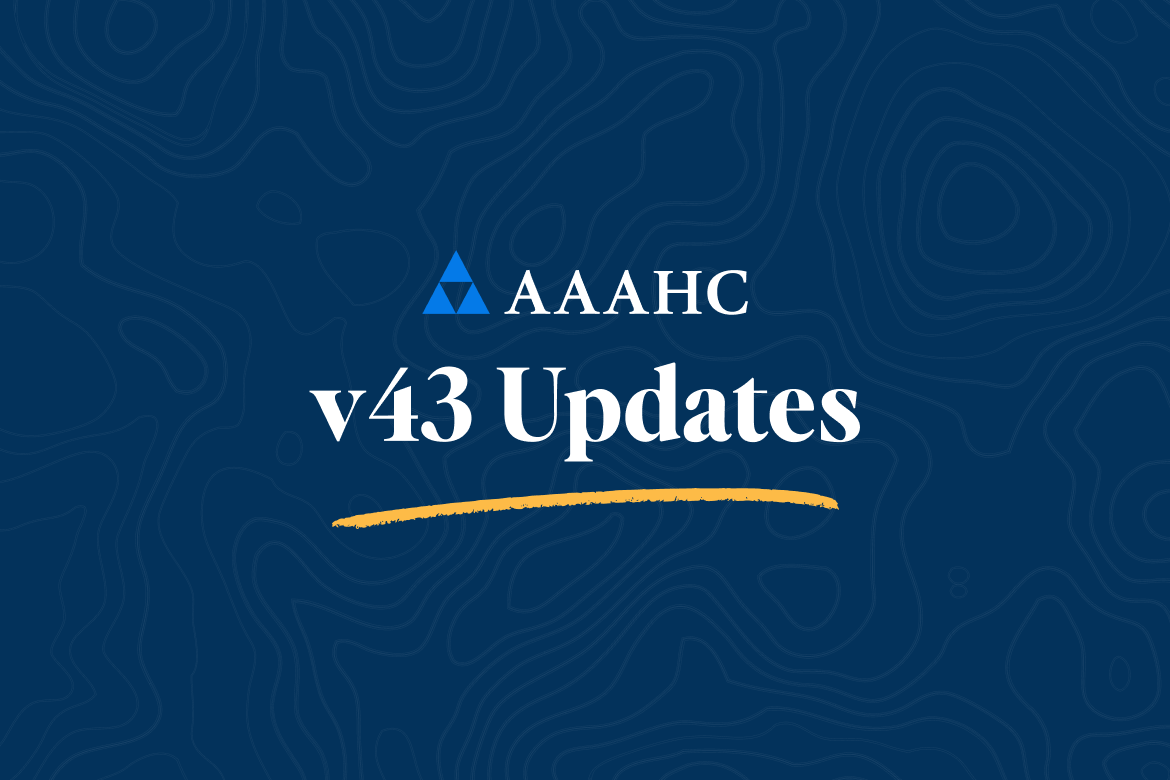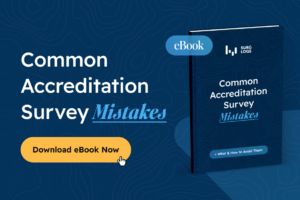In April 2024, The Accreditation Association for Ambulatory Health Care (AAAHC) released a new version (v43) of its Standards Manual, marking a significant update that ambulatory healthcare organizations need to be aware of. This update introduces a range of new standards and revisions aimed at enhancing the quality and safety of patient care in the ambulatory setting.
In addition to the revisions within the manual itself, AAAHC rolled out the new 1095 Engage platform for ASCs and surveyors, a brand new technology platform to be implemented by ASCs. New guidance and resources are now organized and accessible via the platform 1095 Engage (named after the standard 3 year/1,095 day accreditation cycle). Likewise, the manual as well as many additional resources are now hosted inside 1095 Learn.
With the implementation of 1095 Engage, updates to the standards were primarily to clarify the standard, combine or separate standards with only a few actual new or revised standards. Let’s take a closer look into the key changes and what they mean for healthcare providers.
Ambulatory AAAHC Manual Updates (v43)
Overall, the changes to the AAAHC standards manual, both from an Ambulatory and a Medicare perspective, were made to provide further clarity, consistency, or to separate standards into more than one standard, or to combine standards.
Here is a closer look the changes and their corresponding sections:
1. Workplace Violence and Aggression Policy
ADM 140.40 requires organizations to have a procedure for handling Workplace Violence or Aggression. In addition, ADM 150.20 requires that the new policy on Workplace Violence and Aggression must be included in staff orientation and training.
This new policy is also being implemented across a number of industries based on new state laws and requirements. The inclusion of this policy, and subsequent training on the policy, ensures ASCs operate and abide by all US state laws.
2. Patient Rights and Responsibilities (PRR)
The requirement for ASCs to have a Patient Rights and Responsibilities (PRR), has been included in the AAAHC Standards Manual for many years. However, in v43, a new policy, similar to the one mentioned above, was added.
ADM 150.10 requires the organization to have a documented PRR and training on this material must be included in staff orientation and training. This is similar to the updates in the manual for Workplace Violence or Aggression, providing further consistency in AAAHC standards and policies.
3. Medication Reconciliation
From a Clinical Records perspective, v43 also provides a clarification about medication reconciliation. This is likely because medication reconciliation policies and procedures is a frequently cited deficiency among all ASCs. Therefore, v43 helps to clarify what the expectation for compliance with this standard requires.
The clarification for standard CRD 180.50, states that ASCs must complete a list of medications during three significant phases of patient care – at the start of care, at the transfer of care, and at the end of care. Furthermore, ASCs must make a reasonable effort to verify the dosage and usage during the entire 3-phase patient cycle.
4. Safety Program
Lastly, in an effort to help ASCs distinguish between what should be in their Safety Program versus the Risk Management Plan or Emergency Disaster plan, v43 includes Governance 220.30.3 to provide that clarification. In it, AAAHC suggests that an ASC’s Safety Program is really about “Environment of Care”, and therefore, the policy should reflect that.
Preparing for Compliance
For ambulatory healthcare organizations, staying compliant with AAAHC’s updated standards will require a proactive approach. If you’re reading this article, you are taking a great first step in adopting the new updates and policies. Here are a few other ways you and your team can take your adoption a step further:
- Staff Training: Ensure all staff members are trained on the new standards and understand their role in meeting these requirements.
- Align Standards and Procedures: Beyond simply reviewing and updating your policies, make sure that they are put into practice with technology like Surglogs. Surglogs allows you to link policies and procedures to accreditation standards, better enabling you to monitor compliance in real-time.
- Continuous Monitoring: Implement ongoing monitoring and auditing processes to ensure continuous compliance and identify areas for improvement.
Watch Webinar: The Most Common Survey Mistakes
We will handle your request in accordance with our Privacy Policy
The release of AAAHC Standards Manual Version 43 represents a significant step forward in promoting high-quality, patient-centered care in ambulatory settings. By understanding and implementing these updates, healthcare organizations can not only achieve compliance but also enhance their overall quality of care, ultimately benefiting the patients they serve. Stay ahead by familiarizing yourself with these changes and integrating them into your daily practice.


